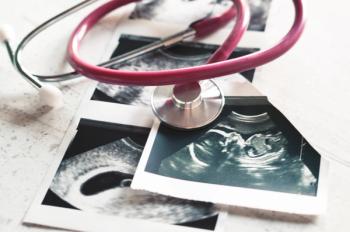
Pharmacy Students Encourage Peers to Join Bone Marrow Registry
The University of Connecticut Student Societies of Health-System Pharmacy is striving to get more individuals to donate blood and bone marrow through an organization called Delete Blood Cancer DKMS.
The University of Connecticut Student Societies of Health-System Pharmacy (SSHP) is striving to get more individuals to donate blood and bone marrow through an organization called Delete Blood Cancer DKMS.
The SSHP students have a table set up in their library and pharmacy atrium so that students can enter the registry or donate to Delete Blood Cancer DKMS, The Daily Campus reported.
“You could be saving a life,” table volunteer Justin Fugal told the paper. “We’re trying to get as many people to register as possible.”
To qualify, students must be healthy US residents aged 18 to 55 years who weigh at least 105 pounds, are at least 4’10” tall, and have a body mass index below 40.
Individuals who are willing to donate bone marrow can help patients with conditions like leukemia, lymphoma, and sickle cell anemia who need healthy marrow from a matching donor.
“When you register, you send in a cheek swab sample,” student Sarah Leverett told The Daily Campus. “They put you on the registry, and when they find a match, they give you a call. You’re on the registry until you’re 60, so you can be called any time.”
The pharmacy students’ tables were set up on March 31, 2016, and will be available on April 5, 2016, as well.
“Bone marrow matches are very specific, so they try and get as many people to sign up as they can,” Leverett told the paper. “Though there is a time commitment, for people who need the marrow, there’s no other way.”
If a donor is a match, he or she will be asked to donate either peripheral blood stem cells (PBSC) or bone marrow.
PBSC is used in about 75% of cases, according to the Delete Blood Cancer DKMS website. In those cases, the donor’s blood is drawn in 1 arm, and then the blood goes through a machine that filters out the blood stem cells. The remaining blood is given back to the donor through the other arm.
Donors will receive daily injections of
In the case of a bone marrow donation, which is usually done to benefit a child, the donor undergoes a 1- to 2-hour surgical procedure, according to Delete Blood Cancer DKMS. Marrow is collected from the hipbone from a syringe.
Donors who undergo bone marrow donation may feel pain up to 2 weeks, but the marrow should be completely replenished within 3 to 6 weeks. Within 1 week, patients should be able to return to normal activities.
Delete Blood Cancer DKMS started in the early 1990s after a man named Peter Harf and his daughters went door-to-door to find a donor for Peter’s wife, Mechtild Harf. Although Mechtild didn’t make it, the Harf family was able to register 68,000 individuals in 1 year. The Harfs started the Delete Blood Cancer DKMS organization in Metchtild’s honor, according to its website.
So far, the organization has registered more than 6 million donors.
Newsletter
Stay informed on drug updates, treatment guidelines, and pharmacy practice trends—subscribe to Pharmacy Times for weekly clinical insights.










































































































































































































